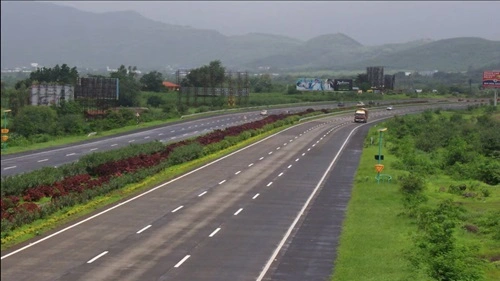After an arduous journey of 22 years, India’s most ambitious infrastructure project—the six-lane Mumbai-Pune Expressway—is finally complete. Built at a staggering cost of ₹16,300 crore, this marvel of engineering connects two of India’s largest metro cities, Mumbai and Pune, reducing travel time to a mere three hours. This monumental project not only epitomizes technological advancements but also stands as a testament to India’s growing infrastructure prowess.
A Dream Two Decades in the Making

The journey of the Mumbai-Pune Expressway began in the late 1990s, driven by the need to address the increasing traffic congestion and the growing demand for a more efficient link between Mumbai and Pune. Over the years, the project faced numerous challenges, ranging from land acquisition disputes to environmental concerns and technical complexities. Despite these hurdles, persistence and innovation kept the project alive, culminating in what is now regarded as a landmark achievement in India’s infrastructure development.
Cutting-Edge Features
The expressway spans over 95 kilometers and boasts state-of-the-art facilities designed to ensure the safety and comfort of commuters. Some of its standout features include:
- Six-Lane Design: The expressway accommodates high-speed traffic, with a well-planned layout ensuring minimal congestion even during peak hours.
- Enhanced Safety Measures: Equipped with advanced surveillance systems, emergency response mechanisms, and strategically placed patrol units, the expressway prioritizes traveler safety.
- Eco-Friendly Construction: The project incorporated sustainable practices to minimize environmental impact, including noise barriers and eco-restoration in certain areas.
- Seamless Connectivity: Interchanges and feeder roads ensure smooth integration with major highways and urban centers, making it a vital link in Maharashtra’s transportation network.
Economic and Social Impact
The Mumbai-Pune Expressway is expected to significantly bolster economic activities between the two cities, which are major hubs for commerce, technology, and education. By cutting travel time to just three hours, the expressway facilitates seamless movement of goods and people, reducing logistical costs and enhancing productivity.
Additionally, the expressway is poised to boost tourism in the region. With picturesque landscapes and nearby attractions such as Lonavala, Khandala, and Karjat, the route is expected to see a surge in leisure travelers. The improved connectivity also holds promise for real estate development along the corridor, further spurring economic growth.
Challenges and Criticisms
While the expressway is an engineering marvel, its journey to completion was far from smooth. The project faced significant delays due to bureaucratic red tape, land acquisition issues, and escalating costs. Critics have also raised concerns about the toll fees, which some argue are steep and may deter frequent usage by certain segments of the population.
Environmentalists have pointed out the ecological impact of the project, particularly in the Western Ghats region, which is a biodiversity hotspot. Although measures were taken to mitigate damage, the long-term effects on local ecosystems remain a point of contention.
A Milestone for India
The completion of the Mumbai-Pune Expressway marks a new era in India’s infrastructure narrative. It demonstrates the country’s ability to undertake and execute complex projects that rival global standards. The expressway serves as a model for upcoming infrastructure ventures, underscoring the importance of perseverance, innovation, and sustainable practices.
As India continues to urbanize and modernize, projects like the Mumbai-Pune Expressway are vital to bridging the gap between cities, fostering economic growth, and improving the quality of life for millions. With its completion, the expressway not only connects two major cities but also unites the aspirations of a nation striving to build a future of progress and prosperity.
Conclusion
The six-lane Mumbai-Pune Expressway is more than just a road; it is a symbol of India’s evolving infrastructure and the promise of what lies ahead. While challenges remain, the successful completion of this project is a cause for celebration, offering a glimpse into a future where connectivity and development go hand in hand. For travelers, businesses, and dreamers alike, the expressway is a path toward endless possibilities.

